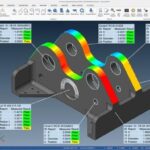Technology has significantly impacted every sector of the modern world, and the healthcare industry has not been an exception. Instruments that we may take for granted today were once cutting-edge innovations in medical science, shaping the landscape of healthcare as we know it.
Out of many such healthcare technologies, the evolution of the hospital bed in hospital and the defibrillator machine stands out in their importance and the dramatic changes they brought about in patient care over time.
Hospital beds as a simple resting places in healthcare facilities have evolved into sophisticated, multipurpose devices that provide essential support for patient’s recovery. The purpose has shifted from merely accommodating patients to contributing significantly to their healing process and ensuring their comfort during their stay in hospital settings.
When tracing the progression of this crucial healthcare instrument, we see that hospital beds have come a long way from being rigid, unadjustable structures to becoming automated beds equipped with a myriad of health mechanisms. Frames became adjustable, enabling patients to sit upright or recline ergonomically. Modern hospital beds now come with in-built communication devices enabling patients to call for immediate help, temperature control options, pressure alterations for preventing bedsores, and electric beds that can change positions at the click of a button. Some advanced beds even track the patient’s heart rate, oxygen levels, and sleep cycles, serving as a real-time health monitoring system.
Alongside the trajectory of hospital beds, our understanding of treating heart conditions has also remarkably transformed. Here, the advent of the defibrillator machine is worth mentioning. This device is used to give the heart a controlled electric shock in instances of life-threatening cardiac dysrhythmias, preventing damage to the heart or loss of life.
The invention of the defibrillator machine came to the fore in the mid-20th century, with Dr. Claude Beck being the pioneer to successfully use the first defibrillator on a 14-year-old boy undergoing heart surgery. Then, these devices were bulky and powered by AC mains current, making them hard to move and unsafe for use in some situations.
Over time, technological advancements led to the production of more portable and lightweight defibrillators that could run on battery power. They evolved to become automated defibrillators capable of diagnosing dangerous heart conditions without needing the constant presence of medical professionals. Even more impressive is the current trend of ‘Public Access Defibrillators’, which allows anyone in public spaces to use these life-saving machines in emergencies.
The latest models, armed with technological advancements, can read a patient’s heart rhythm, assess whether defibrillation is needed, and deliver the shock automatically if required. Today, we see defibrillator machines as compact and user-friendly devices that can be operated by minimally trained individuals in medical emergencies, breaking the barriers of accessibility and usability.
These advancements in healthcare technology–specifically of the hospital bed in hospitals and defibrillator machines–has not just improved patient outcomes but has also made healthcare more responsive, manageable, and accessible. Today, the hospital bed in a hospital is not merely a place for patients to rest; it acts as a powerful tool aiding the speedy recovery of the patient.
Defibrillator machines have become an emergency life-saver beyond the confines of hospital walls, prominently contributing to enhancing the survival rates from sudden cardiac arrests. Together, they stand as beacons of the evolution of healthcare technology, marking the journey from basic patient care facilities to an integrated, patient-centric approach in healthcare.
Need a defibrillator machine The Bajaj Finserv App makes it simple Get quick financing with easy steps and flexible terms. Equip your medical facility without financial worries. Download the Bajaj Finserv App today and get your essential equipment effortlessly
To conclude, both the hospital bed in hospitals and the defibrillator machines have come a long way since their inception. As technology continues to evolve, we move towards an even more efficient, accessible, and holistic healthcare approach. And, with every advancement, it becomes clearer that healthcare is much more than the sum of individual technical enhancements. It is an integrated agent of change, encompassing a broad scope of factors that work together to ensure the well-being of the patient. These transformations demonstrate exactly that truth.



